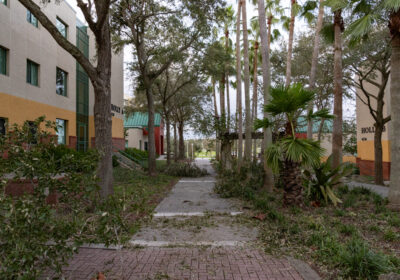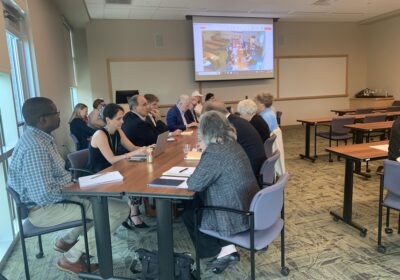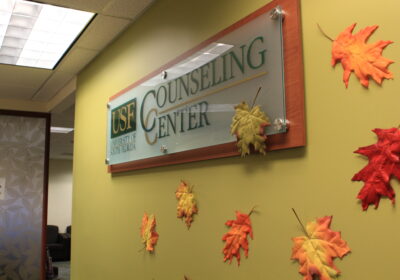Student-led art exhibit showcases multidimensional change
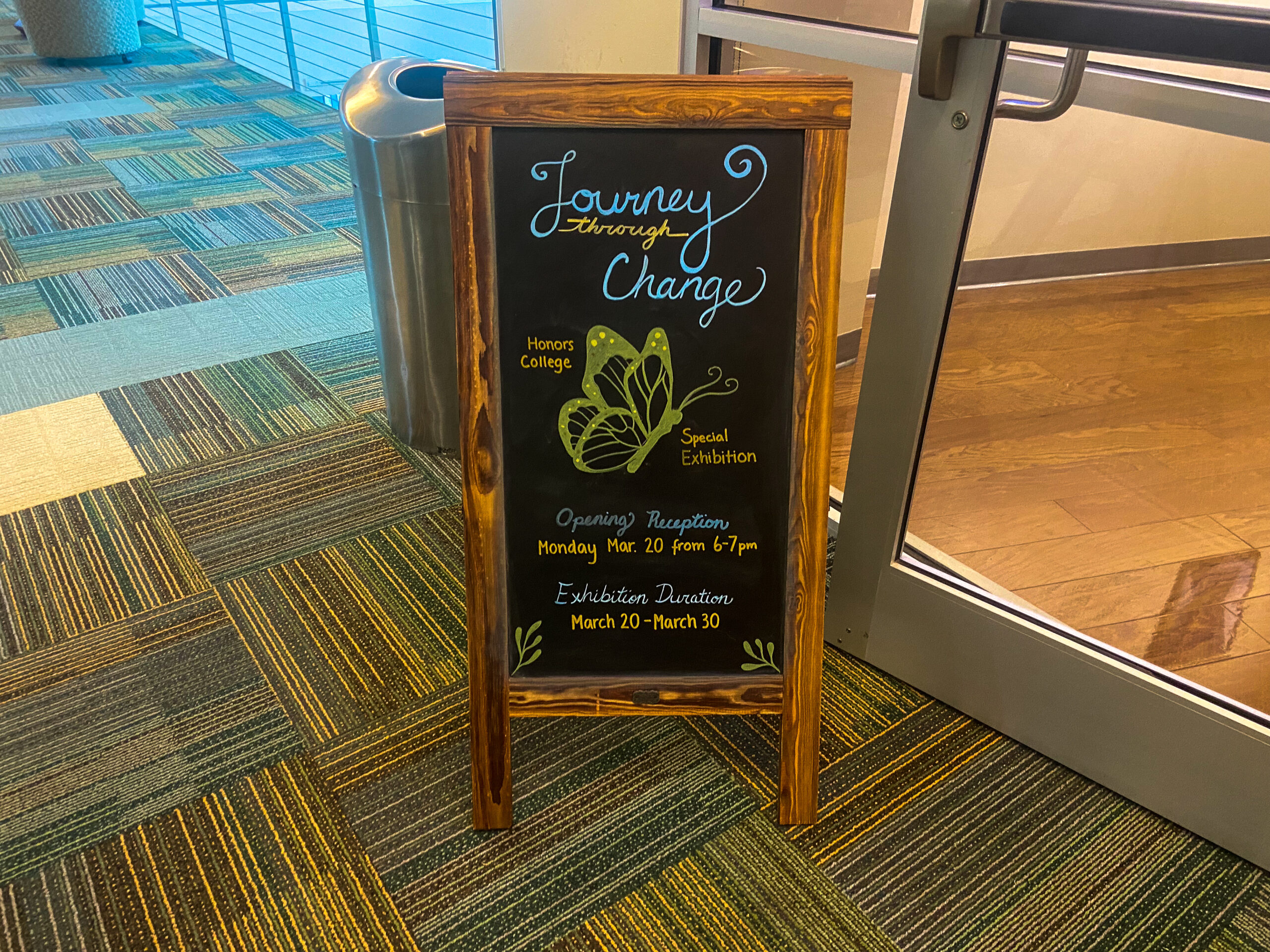
Standing in front of a group of 20 attendees in the dimly lit Marshall Student Center Centre Gallery, freshman interdisciplinary social sciences major Carolina Gutfruend shared the significance of honoring sexual assault awareness through her art.
Recounting her own experiences with guilt and shame as a survivor of sexual assault, Gutfruend said she wanted her pieces to not only capture the emotional and physical harm caused by sexual abuse, but the empowerment she found in the healing process.
“It changes the way that you view yourself and bad things happen in your life, so I thought it was important to remind people that you can’t just lay down and give up, you have to continue fighting, eventually, it can be you can see it as a growth opportunity. I’m a very different person from before, and in some ways, a better person,” she said.
“So I had three pieces titled “On Sexual Empowerment,” a series of poems on my personal journey with sexual assault and how that can kind of deteriorate your self view, but also make you a stronger person.”
Gutfruend’s portion of the exhibit was one of 30 pieces presented to those attending the Honors College “Journey Through Change” art exhibition on Monday. The event, which lasted from 6 to 7 p.m., allowed viewers to walk through and converse with the selected artists about their individual pieces.
For gallery co-coordinators senior biomedical sciences major Sana Lulu and junior chemistry major Vincent Nguyen, the process of selecting a change to theme their class exhibit came down to what they thought would best resonate with college students.
Given the constantly evolving nature of society, Lulu said her and Nguyen attempted to capture change through dividing the exhibit into three sections, or changes in politics, society and the environment.
Working alongside 17 other classmates in their “Curatorial Practices and Public Art” course, Nguyen said himself and Lulu were charged with managing, curating and narrowing down over 120 submissions from various honors students.
When selecting the exhibit’s pieces, Lulu said she found it important to have a balance of not only spoken word, sculpture, painting and mixed media art, but pieces that were open to personal interpretations of change.
Junior health sciences major Ishali Rajguru’s four-part photography composition stood as an example of one of those displays. While initially presented under spotlights to the viewer as nothing more than different snippets of nature captured throughout her travels in North America and Eurasia, Rajguru said her photographs were intended to capture beauty in the physical world alongside its intersections with modern society.
Her showcase piece, a photograph depicting a physical divide in the tectonic plates between North America and Eurasia, was something she said she hoped would convey polarity within the current social and environmental spheres of the world.
Taking a different interpretation of the central theme of change, freshman biomedical sciences major Emerson Gaspery opted to capture her struggles with accessing necessary healthcare procedures as a woman through a poem titled “Why She Hates the Doctor.”
Obscured toward the back of the exhibit alongside other pieces and artists focusing on social change, Gaspery said she felt inspired to speak on the difficulties women experience when attempting to access OBGYN treatment, especially from male physicians.
Using language to capture her recent struggles finding a diagnosis for her illness, the poem was intended to provide the audience a raw sense of her frustration and confusion with the healthcare system and a glimpse into her journey toward advocating for herself as a patient, according to Gaspery.
“It’s a really prevalent problem that women in the health care system when they go to the doctor, especially a male doctor, tend to not have their feelings heard and tend to not have their symptoms taken seriously. They tend to say it’s all in your head and it’s really something I’ve struggled with recently,” she said.
Divided into three parts, Gaspery added that she aimed to highlight the different viewpoints women have of their doctors and the health care system throughout their lives.
“When you’re a kid you don’t like going to the doctor because they’re gonna poke you with different shots,” she said. “As a young woman, you’re going to not like going to the doctor because he’s not really listening to you. And then when you’re older, you’re going to be in a lot of pain and you’re not going to want to go to the doctor, so I just wanted to capture that.”
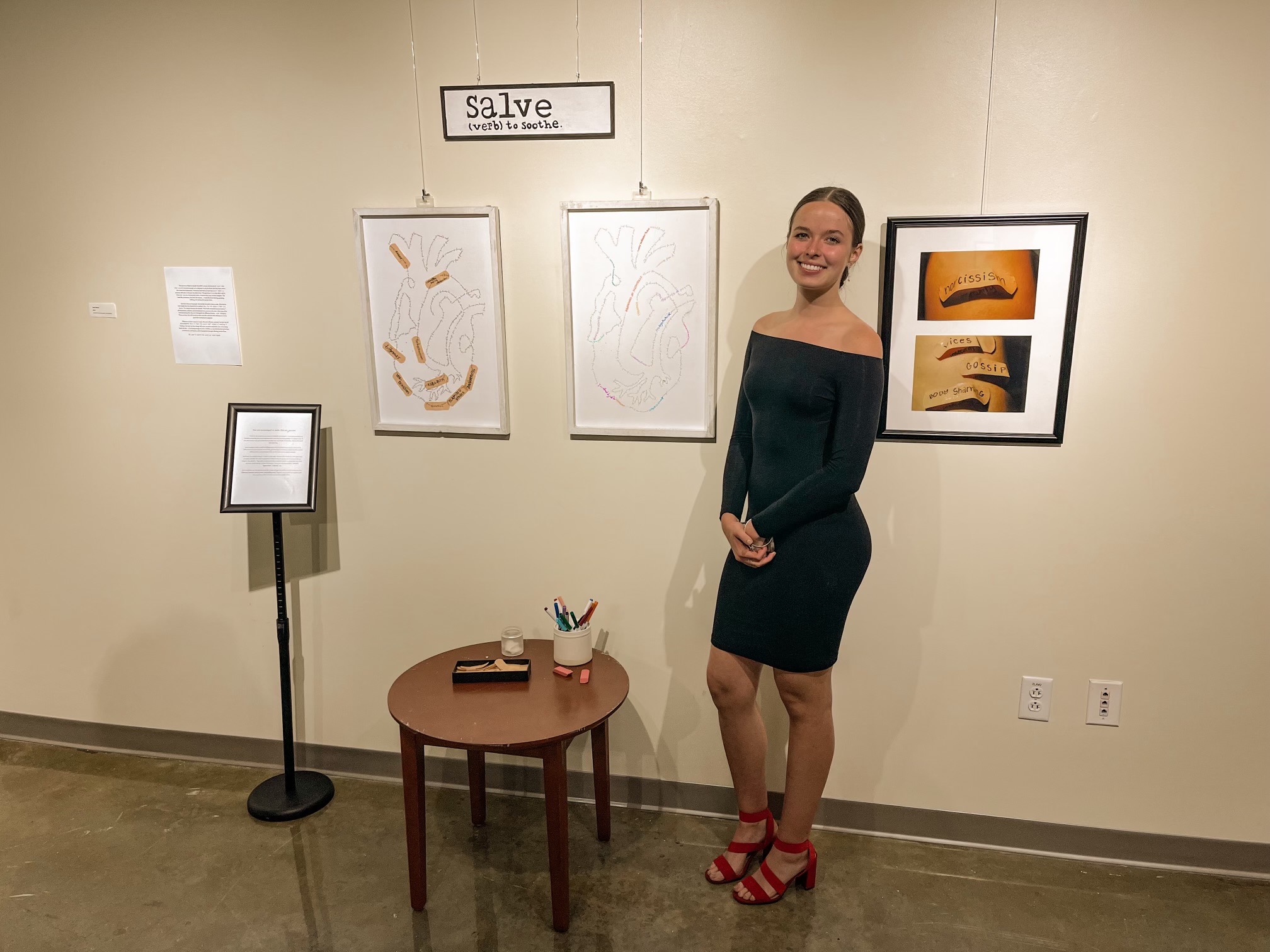
For freshman psychology major Kelly Wenzel, it was important to highlight the discourse and representation of mental health in art. Featuring two canvases of hand-drawn human hearts along with bandaids and sharpies, Wenzel strived to create an interactive exhibit that allows the audience to contrast different coping mechanisms whilst learning to embrace the individuality of the healing process.
Drawing inspiration from her social circles, Wenzel found passion in expressing the links of psychology in art through the unique expression of the healing journey, including the victories, failures and the underlying dangers of suppression and unhealthy projection. Demonstrating the individual power of curbing negative coping mechanisms and encouraging positive ones instead was what she said stood as the main reason behind the title of her exhibit “Salve.”
“There’s a huge journey, and just being able to see the difference happening and rewriting the narrative makes, instead of masking it, is just game changing.”
Tying the exhibit together was Lulu’s photograph, “Journey Through Change,” which captured a glimpse of a recent tour she took through the developing Judy Genshaft Honors College building.
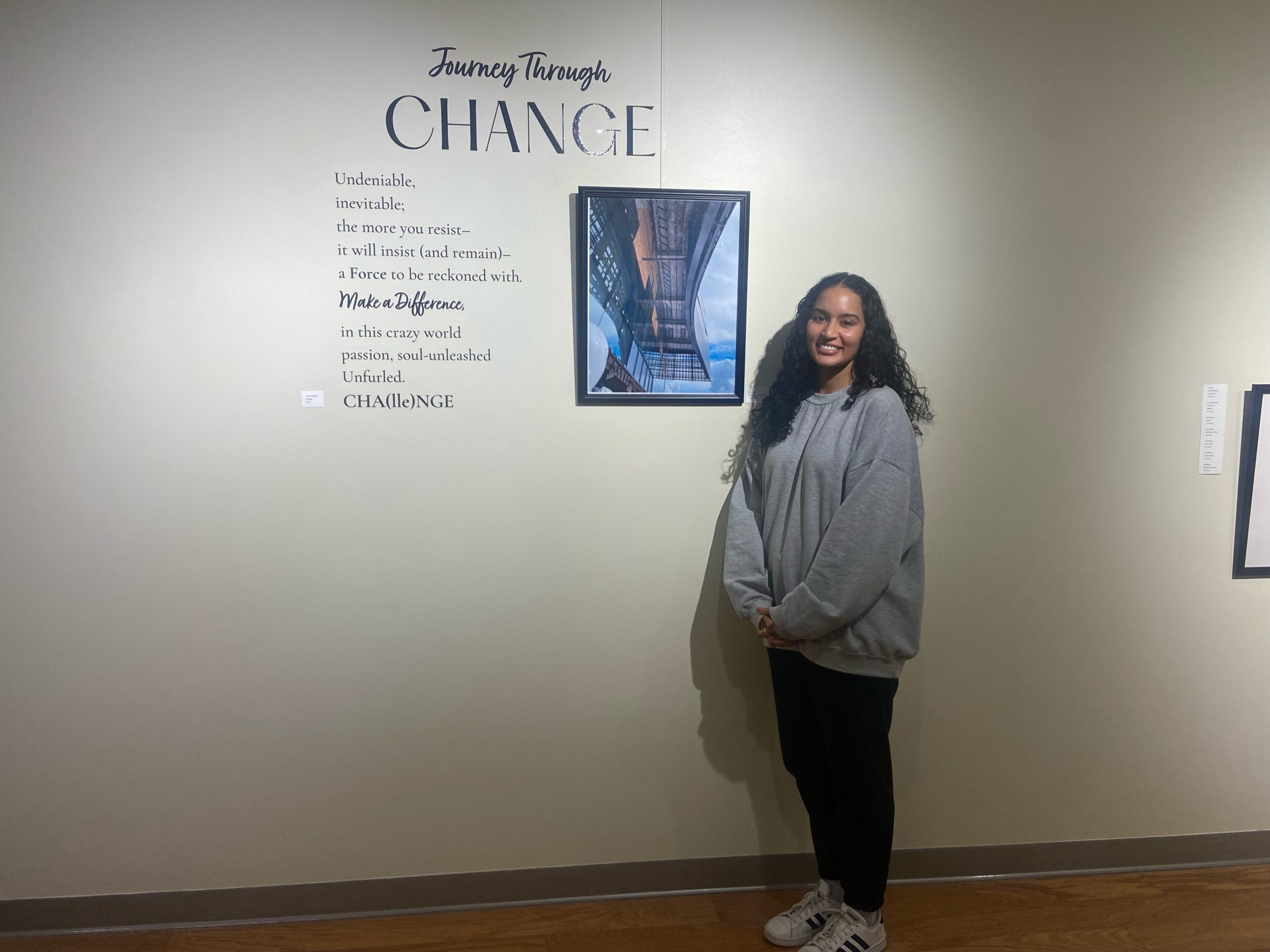
Accompanied by a poem submitted by a fellow honors student, Lulu said her piece was initially intended to be a simple shot of the ceiling of one of the balconies being constructed within the building. However, in light of the theme of change, it only made sense to honor the use of movement — whether physical or metaphorical — in achieving progress, according to Lulu.
“I don’t know if any of you have had the chance to visit [the Honors College]. It is currently under construction, but it’s estimated to be done by this spring, which is really exciting, and this was a picture that I took on a tour. To me, when I think of moving and change, I’d like to think it’s different for a lot of people and that’s one of the reasons we decided to go with this theme because it can be taken in so many different ways,” she said.
“That’s also how we decided to lay up the gallery. At the beginning we have more of how nature changes lives, much more personal issues and social change. I wanted to focus on the movement part and leave the rest of it up to interpretation.”

